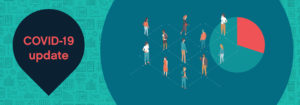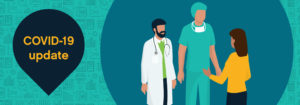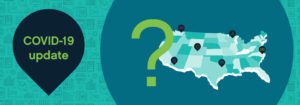At this year’s 21st Annual Compliance Institute, compliance executives gathered to share insights and practical advice on common compliance challenges – from auditing and monitoring to privacy and security risks. Our partners from UT Southwestern (UTSW) Medical Center were selected to present their abstract, “Designing a Successful Analytics-Based Hospital Compliance Program and Securing Cross-Department Endorsement.” During their session, UTSW’s Kate Conklin, Chief Compliance Officer and Trissi Gray, Assistant Director of health system compliance, shared their knowledge on how automation, sophisticated algorithms and analytics played key roles in improving compliance within their organization.
At the conclusion of the conference, we connected with Conklin who shared her experience at the event, including trends and notable takeaways. Below you’ll find her feedback:
1. Were there any notable trends that you were surprised to see?
The most notable trend I found during the conference was a consistent message about the role compliance plays in establishing a culture for higher and more reliable performance across the organization. I was pleased to hear that this was a common theme amongst the keynotes and speakers that challenged Compliance Officers and other leaders to partner with the C-Suite to promote a foundational culture of compliance. I gained excellent insight into different methods for translating data into useful dashboards designed to educate the organization’s executive team.
2. What were your favorite parts of the event and what do you hope to see next year?
The keynote speakers were exceptional. I left the event feeling very inspired to elevate the importance of compliance and continue to advocate for automated analytics to lessen the burden. Next year, I hope to see more real-life examples from organizations that have faced significant challenges with a qui tam relator or non-compliance that resulted in serious penalty. I’m also looking forward to hearing topics that relate to leveraging data from hotline calls and other investigations to inform the institution about the work that is being done by the Office of Compliance. I believe this type of transparency is needed to encourage more reporting and strengthening of the organizational culture to ensure that their voice is heard and their concerns will be addressed.
3. Other post-conference takeaways that you’d like to share?
It’s always nice to network with your compliance peers. As compliance executives, we find ourselves in a unique situation, as we’re tasked to mitigate readmission, identify audit risk and find cost saving opportunities. However, when you hear so many compliance leaders share their best practices and tips, there’s a true sense of innovation and progress that empowers us all to continue leading the charge in improving our own compliance departments. In sum, it was one of the best conferences I have attended!
To read more about what Kate and Trissi discussed during their speaking session – such as manual vs. automated compliance monitoring and the importance of key stakeholder engagement – read highlights from their presentation, which were originally featured on the Compliance and Ethics blog. To learn more about how to act on your data and improve compliance, read about our revenue integrity solution.
Get our take on industry trends
Avoid COVID-19 modeling pitfalls by eliminating bias, using good data
COVID-19 models are being used every day to predict the course and short- and long-term impacts of the pandemic. And we’ll be using these COVID-19 models for months to come.
Read on...Population Health Amid the Coronavirus Outbreak
In speaking with many colleagues throughout the provider and payer healthcare community, I’ve found an overwhelming sense of helplessness to the outbreak’s onslaught. This is exacerbated by the constant evolution of reported underlying medical conditions that indicate a higher risk of hospitalization or mortality for a coronavirus patient.
Read on...COVID-19 and the Financial Storm Ahead for Providers
Across the country, healthcare organizations are seeing 40%-80% declines in monthly charges with some of the most profitable services lines only seeing 20% of their normal monthly volumes during the pandemic.
Read on...3 Steps Any Healthcare Organization Can Take to Improve Enterprise Analytics
By Kristin Weir When it comes down to the most basic purpose of why organizations use analytics, it’s simple: they…
Read on...


